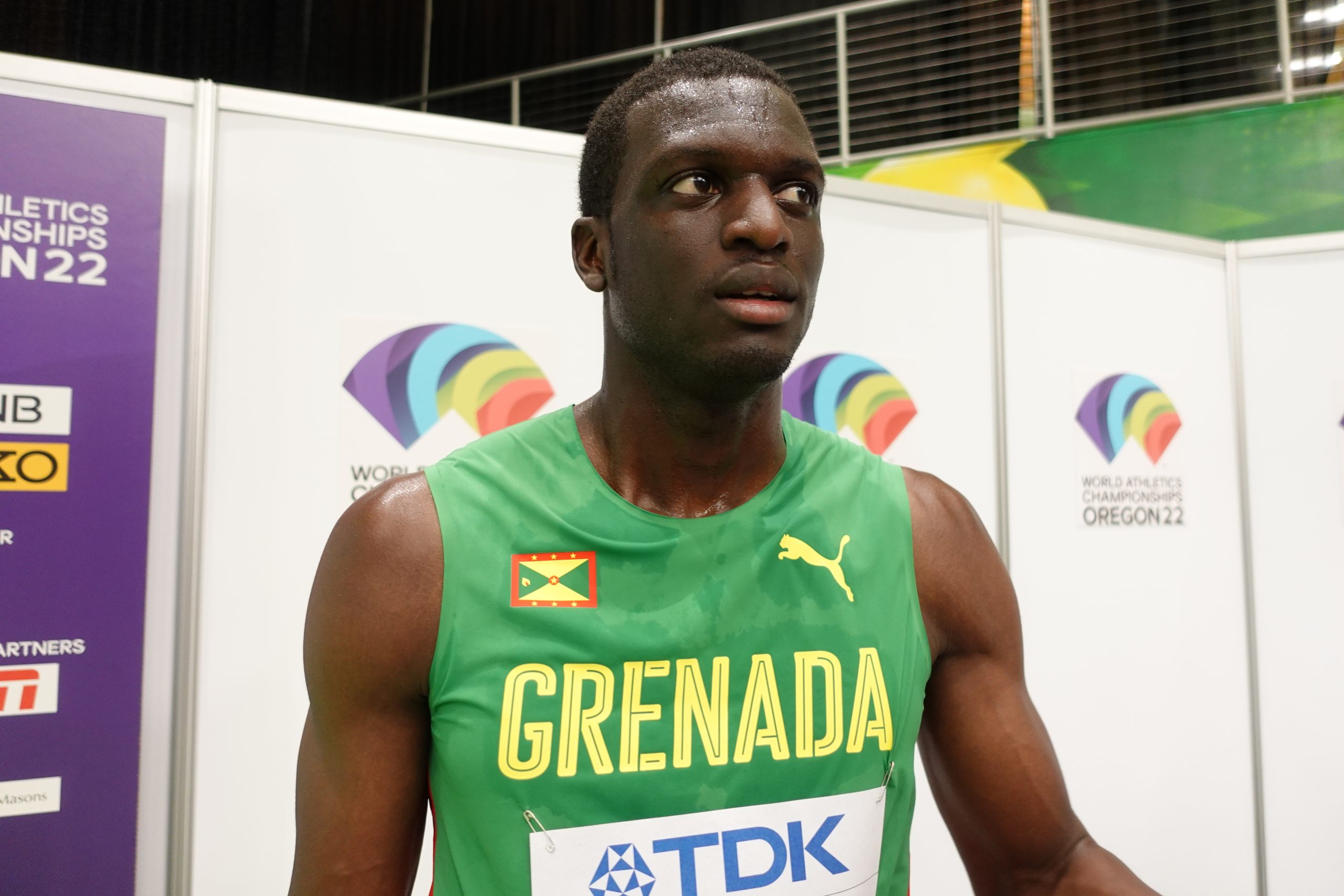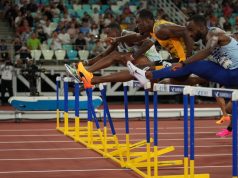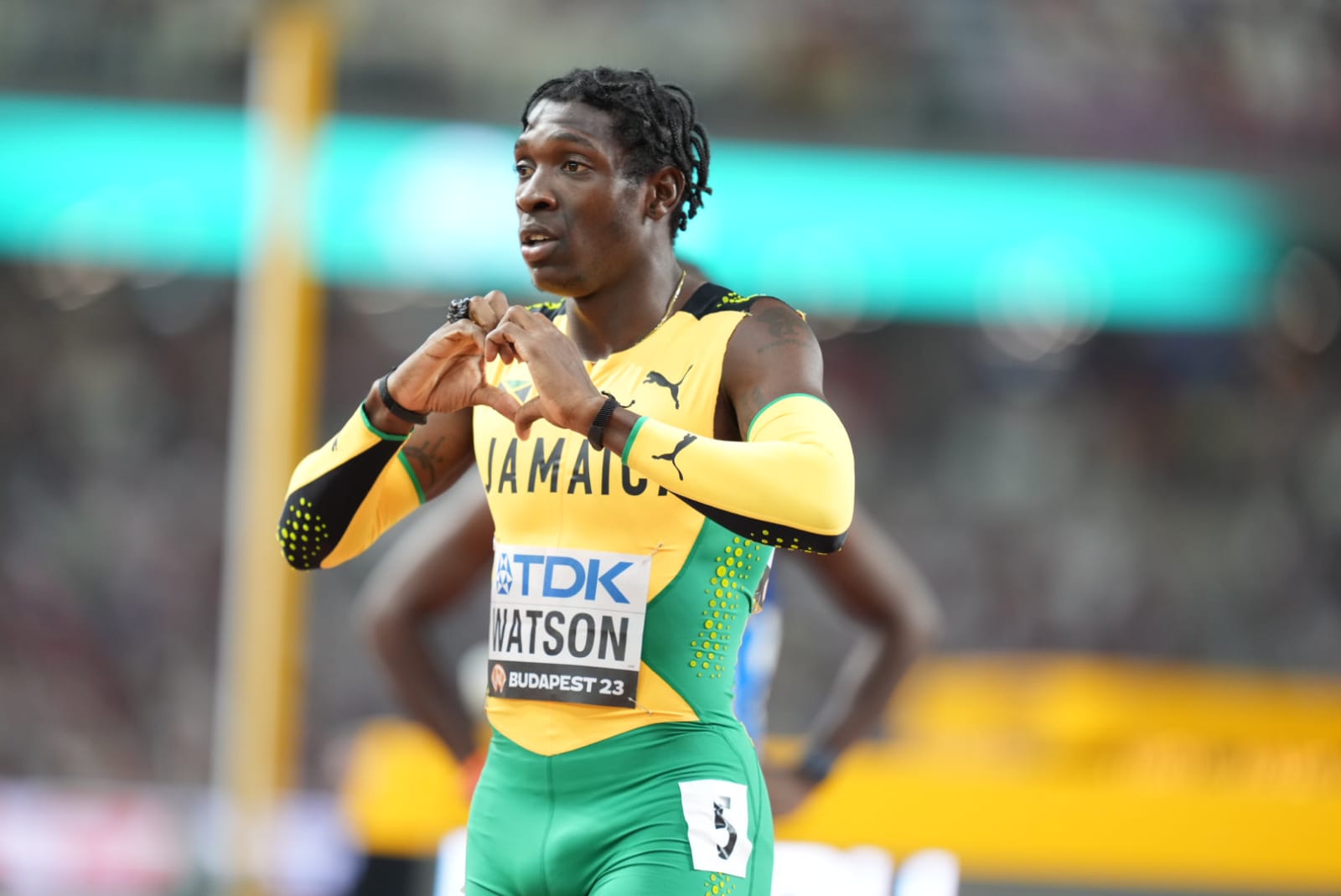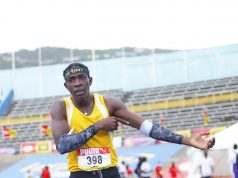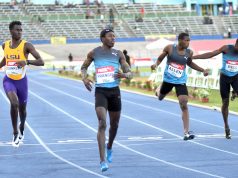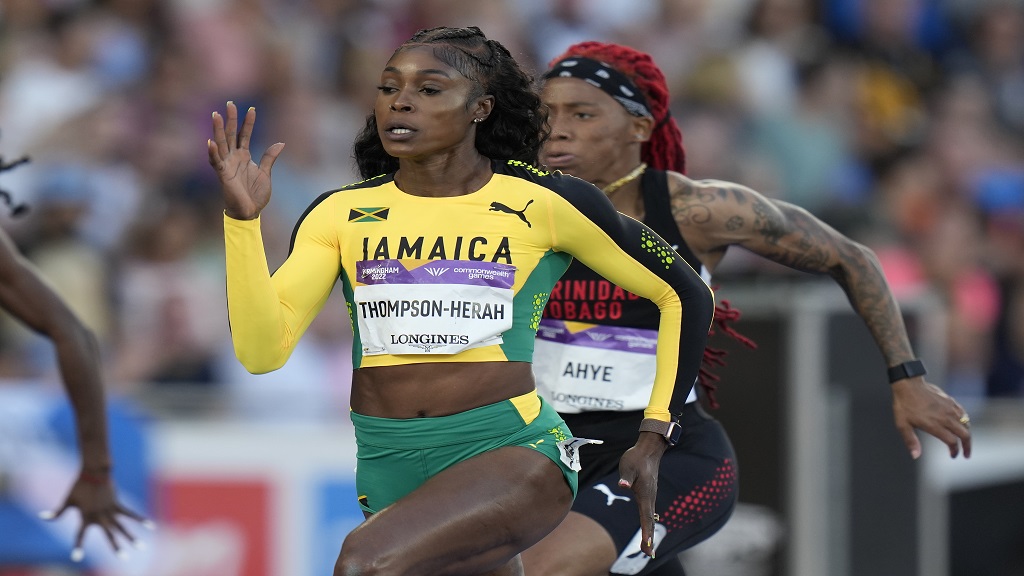By Professor Trevor Hall, Special to Trackalerts.Com
Over the last week, the quarter-mile, now called the 400-meters has returned to prominence in the World Championships of Athletics in Moscow. Before the athletes descended on the Russian capital in summer 2013, the 400-meters was seen as a race where defending Olympic champion Kirani James would beat LaShawn Merritt, and Luguelin Santos and one of the Borlée twins would battle to get on the podium.
Furthermore, the Jamaican men’s 4 x 400 relay team was expected to just make the finals, but not get close to the medals. Now that the championships are over, reality is a long way from prognostication, and in Jamaica, a new name has emerged—Javon Francis. He ran 44.05 on the anchor-leg of the 4 x 400 relay, and took Jamaica from fifth to second. Before looking at Mr. Francis, let us look at the winner of the 400-meters.
First, Mr. LaShawn Merritt ran 43.7 to win the gold medal, while Mr. Kirani James ran 44.9 to finish in sixth place. That shocked everyone, especially Mr. James; however, Mr. Merritt was not surprised! To be honest, I too was shocked. As a historian, I can now do what we do best—reconstruct the past, instead of peering into the future. I recall a conversation decades ago while I was a Triple Jumper at University of Texas-El Paso. I was talking to my teammate Steve Williams, one of the few men who ran faster than 10 flat for the 100-meters, under 20-seconds for the 200-meters, and below 45-seconds for the 400-meters. Steve had just run 45.2 for 440-yards or 44.9 for 400-meters. He had strained a hamstring in the 220-yards, and I suggested that he concentrate on running the 440, because it was less stressful on the legs. Steve reminded me that, “running the 440 under 46 second is like walking up to a big man, placing your hands at your side, and saying to him—punch me in the face.”
I experienced the 440 as a sophomore at Newtown High school in Queens, New York City. My first 220 was in 23-flat, and I felt great going into the second turn. At the top of the second turn I glanced at the finish line where the timers were standing. I knew I had a big problem when the finish line began moving away from me. Then I abruptly hit a brick wall and felt like a grand piano had fallen on my shoulders. In high school, we called it rig, short for rigor mortis—muscular stiffness following death, according to Webster’s Dictionary. I remember my stride got shorter and shorter, until I could not put one leg in front of the other. I felt like I was dancing the moon-walk, where one moves backwards on the dance floor. My entire body locked up as I crossed the finish line at 51.1-seconds for the 440-yards or a respectable, 50.8 for the 400-meters. I knew that was not my race. Mr. Steve Williams was right; it felt like a big man had just punched me in the face when I had my hands at my side. Before analyzing the recent 400-meters in the World Championships in Moscow, it is necessary to respect the 400-meters, and the athletes who run it. One notices that no 400-meter runner smiles before the race.
At the recent World Championships in Moscow, Mr. LaShawn Merritt knew the pain of running faster that 44-seconds, and he decided to pay the price to become the world champion. According to Track and Field News, Mr. Merritt’s 100-meter splits were, 11.1, 10.1 [21.2], 10.6 [31.8], 11.9 [21.2 + 22.5] = 43.7. As we can see, Mr. Merritt’s last 100-meters were a slow 11.9, which shows that the ever-present rig took its toll, even on the world champion. By comparison Mr. James’s splits were, (11.1, 10.2 [21.3], 10.6 [31.9], 13.1 [21.3 + 23.7] = 45.0. Both runners’ times were rounded down .1 of a second to 43.6 and 44.9.
According to the November 1999 edition of Track and Field News, when Mr. Michael Johnson broke Butch Reynolds’s world record for the 400-meters in Seville’s World Championships, Mr. Johnson ran splits of: (11.0, 10.3 [21.3], 10.5 [31.8], (11.4) = 43.18. Mr. Johnson’s last 100-meters were faster than what today’s athletes are running. His upright body and tremendous upper-body strength might have been a key to his relatively fast final 100-meters. In contrast, some coaches believe that it is best to lean forward over the last 50-meters of the 400. This technique stresses the use of gravity and a long, straight arm-pull, close to the body, to help counter the effect of Mr. and Mrs. Rig and the Rig family.
Back to Mr. Merritt and Mr. James, their splits at the 200-meters show Mr. Merritt was only .1 second ahead of Mr. James; they were almost even. At the 300-meter, both men were still only .1 second apart; thus, both ran the same 10.6 for the third 100. Mr. Merritt won the race in the last 100 when he ran 11.9 and Mr. James ran a very slow 13.1. However, the splits were only a small part of the story.
Mr. Merritt runs under 20-seconds for the 200, while Mr. James cannot go that fast. Since Mr. Merritt was a lane outside of Mr. James in Moscow, Mr. Merritt went out fast and kept on going. Mr. James ran Mr. Merritt’s race; however, Mr. James does not have the flat speed that Mr. Merritt possesses, and by the end of 300-meters, Mr. Merritt had broken the will of Mr. James to continue the race. Normally, Mr. Merritt would have come back to Mr. James, at the end of the 300-meters. However, in the Moscow race, Mr. Merritt kept on going, and Mr. James had nothing left in the tank. Even the great 2012 Olympic Champion, Mr. James, fell victim to the Rig.
Mr. James’s major error was that he ran Mr. Merritt’s race. In the future, Mr. James has to run his own race. He should focus only on himself and his technique, and forget about Mr. Merritt. It is important that Mr. James and his coaches believe that when he runs 43.4 or faster, he will win—unless Mr. Merritt runs close to the world record of 43.1. Mr. James needs to run against the clock, not against other athletes. Thus, Mr. James and his coaches have to go back to the drawing board, especially when he has to run three rounds. I would suggest that Mr. James runs either more 200-meters or more 800-meters. He and his coaches must decide if they want to increase his speed or his strength. If he does both then Mr. James will probably break the world record.
However, the rivalry between these two great quarter-milers is just beginning. On the Diamond League, Mr. James will have a better opportunity to win, because he will only run one race. In a single race, Mr. Merritt will not have the same advantage that he had in Moscow, where the men had to run three fast rounds in a few days. Moreover, there are a few things both athletes can do to run faster: they need to learn the old knowledge about running the 440-yards—wisdom that has been forgotten in the twenty-first century. I recall decades ago, speaking to a great American quarter-miler, and his coach; both agreed that “the secret to a very fast 440 is to run fast 330s in practice, and to think about the race as 330 + 110, not as 220 + 220.” That is what I learned at Arizona State University, when Coach Richard Purcell’s team ran the 4 x 400 relay in an American College Record of 3.01. The 400 is a long-sprint, and athletes do not have time to float in mid-race and kick at the end.
That brings me to Mr. Javon Francis, the 18-year-old anchor leg who took the Jamaican 4 x 400 meter relay team from 5th to 2nd in the finals of the World Championship in Moscow. His split was 44.05 according to Seiko, the official time-keepers for the championships. Mr. Francis ran the first 100 just as fast as the other four men in front of him. However, as soon as he hit the backstretch he went by three men, as if they were standing still. Then, he cut into lane one, placing himself in second place, and just kept on going. He was not satisfied, and looked to catch Mr. Merritt, who had a big lead and was cruising. Mr. Francis actually went after Mr. Merritt, but he was too far ahead.
By the time Mr. Francis hit the 300, he was meters ahead of the third-place runner. Then, about the 350, the Russian anchor leg came back on his right shoulders. However, Mr. Francis dug deep and found another gear, holding off the Russian to bring his Jamaican team the silver medal. That was one of the best relay legs that I have ever seen in my 50-plus years in Track and Field. It is up there with the 43.4 for 440-yards or 43.1 for 400-meters that Mr. Maurice Peoples ran at the NCAA championships for Arizona State University in 1973.
Both Mr. Merritt and Mr. Francis proved once again that the 400 is a long sprint, and there is no antidote for speed-endurance. That is why many Track and Field experts believe that Mr. Usain Bolt could be the greatest quarter-miler in history, and someone who can break the world record. With Mr. Bolt’s 9.59-speed in the 100 and 19.19 in the 200, he would have little trouble running the first 200 of the 400 in 20.8, and dropping a 300 in a relaxed 31.5. After that, with training, he should be able to finish up at low-43, for the 400. But, why should Mr. Bolt go through all that pain and face Mr. Rig when he could dominate the 100 and 200, with very hard work, and not suffer the pain inflicted by Mr. and Mrs. Rig and their family of granddaddy Rig and baby Rigs.
Over the years, I have developed a speed-endurance program called SWIFT (Speed With Intelligence Flexibility and Technique). SWIFT could open a new epoch in the quarter-mile, one that has not been seen since Mr. Michael Johnson retired from our sport. I believe that the current group of athletes could begin an assault on Mr. Johnson’s world record. We coaches and historians of Track and Field could assist this new cadre of quarter-milers and their coaches who need to learn long-forgotten knowledge about running the 400.
One place to start is to call the event the quarter-mile instead of the 400-meters. It would be wise for athletes to practice in yards, by running 660-yards, 550-yards, 440-yards, 330-yards, 150-yards, and 110-yards. Running yards will help the 400-meter runners over the final 5-meters of the race—the slowest part of the race! I skipped over the 220-yards in practice, because I was taught by Coach Richard Purcell that the 220 is too long for speed and too short for strength. Finally, the World Championships has brought a renaissance to the quarter-mile, and reintroduced one of the most beautiful events in Track and Field.
**Professor Trevor Hall is an All-American Triple Jumper and Penn Relays Champion. He coached Mr. Paul Ereng, the 1988 Olympic Champion in 800-meters for Kenya. Hall earned a Ph.D. in History from Johns Hopkins University and recently was a volunteer Jumping Coach at Manchester High School in Jamaica. He speaks Portuguese and is now a sports consultant, historian, and speaker who can be reached at: [email protected]



